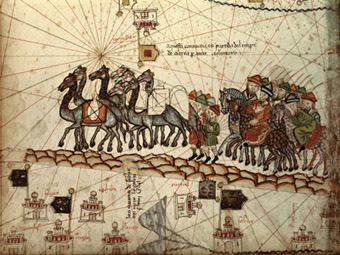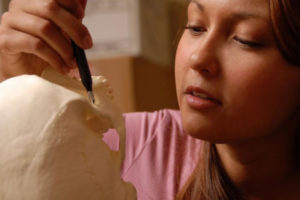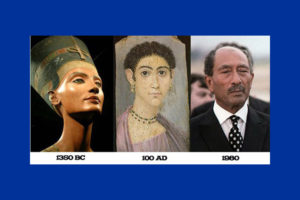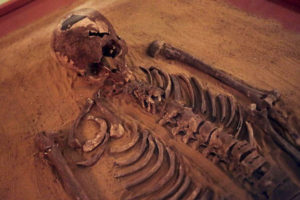Marco Polo did really go to China, new research which disproves two centuries of doubt, has shown.

Hans Ulrich Vogel, a professor of Chinese studies at the German University of Tübingen, in his new book Marco Polo Was in China (no beating about the bush there, then) shows that by studying long-neglected parts of Polo’s narrative, it can be definitively proven that the Venetian explorer did go to the Far East.
It has often been claimed that Polo’s famous account of his exploration, titled Description of the World (but more commonly known as The Travels of Marco Polo fails to mention several highly important features of Chinese society which would, the speculation has maintained, been prominent in any visitor’s account.
For example, Polo doesn’t mention tea, chopsticks, the Chinese writing system, the practice of binding women’s feet and, most famously, fails to take note of the Great Wall of China.
The new research has however “The strongest evidence is that he provided complex and detailed information about monetary conditions, salt production, public revenues and administrative geography that have been overlooked so far, but are fully corroborated in Chinese sources,” Vogel was quoted as saying in an article published by Discovery News.
The historian noted that these Chinese sources were collated or translated long after Marco Polo’s time, the article continued.
“So he could not have drawn on them. He could not even read Chinese,” Vogel added.
What about the fact that Polo, who claimed to have entered the service of the Chinese court for over a decade, is not mentioned in any Chinese records?
According to Vogel, skeptics have often overestimated the frequency of documentation and the intentions of Chinese historiographers.
“Even Giovanni de Marignolli (1290-1357), an important papal envoy at the court of the Yuan rulers, is not mentioned in any Chinese sources—nor are his 32-man retinue, nor the name of the pope,” he said.
As for the Great Wall, new research has established that it did not exist at the time.
“The original wall had long since disintegrated, while the present structure — a product of the Ming Dynasty (1368-1644)— was yet to be erected,” said Vogel.
Vogel used new data, focusing on a largely neglected part of Polo’s travelogue.
“He is the only one to describe precisely how paper for money was made from the bark of the mulberry tree. Not only did he detail the shape and size of the paper, he also described the use of seals and the various denominations of paper money,” said Vogel.
According to the historian, Polo’s “Travels” is not a 13th-century guidebook to China; on the contrary, it’s a rather dry manual to the commerce of the Silk Road.
“Marco Polo reported on the monopolizing of gold, silver, pearls and gems by the state, which enforced a compulsory exchange for paper money,” said Vogel.
“He described the punishment for counterfeiters, as well as the 3 percent exchange fee for worn-out notes and the widespread use of paper money in official and private transactions,” he added.
Vogel noted that Polo is also the only one among his contemporaries to explain that paper money was not in circulation in all parts of China, but was used primarily in the north and in the regions along the Yangtze.
According to Polo, cowries, salt, gold and silver were the main currencies in other parts of China, such as Fujian and Yunnan.
“This information is confirmed by archaeological evidence and Chinese sources compiled long after Polo had written his ‘Travels,’” Vogel said.
The Venetian traveler’s description of salt production was also accurate and unique. Not only did he list the most important salt production centers, but he described the methods used to make salt and detailed the value of salt production.
“Polo knew what he was talking about. His reports about monetary conditions, salt production and revenue, public finance, and administrative geography are more precise and accurate than those of all the other Western, Persian and Arabian authors taken together,” Vogel said.
“This and other information, the accuracy of which has not yet been fully appreciated, indicate that Marco Polo really did serve the Great Khan,” he concluded.
* The issue of the invention of paper arises as an interesting aside to this story.
The invention of paper is most often ascribed to a Chinese Court Official, Ts’ai Lun, who in 105 AD recorded instructions for mixing mulberry bark, hemp and rags with water, mashing them into a pulp, pressing out the liquid, and hanging it out to dry in the sun.
This process produced a material which is commonly called paper, but which was in fact a refined papyrus (from where we get the word paper) which was developed by the Egyptians millennia prior to Ts’ai Lun.
Without disparaging the Chinese recipe—because it was a significant breakthrough—the reality is that what we today call paper, made of wood pulp and chemicals, is the product of a purely European-originated process.
(The only “paper” which still has a cotton fiber element in it, is currency, as a matter of interest).
It was only in the 18th century that a French scientist, René Antoine Ferchault de Réaumur, came up with the idea of making paper from wood.
In 1838, a German inventor by the name of Friedrich Gottlob Keller took de Réaumur’s idea and perfected it by 1845, the year in which he filed a patent for a wood-grinding machine. This was the origin of modern paper. It was only later in the nineteenth century that the final chemical composition of modern paper was finalized.







